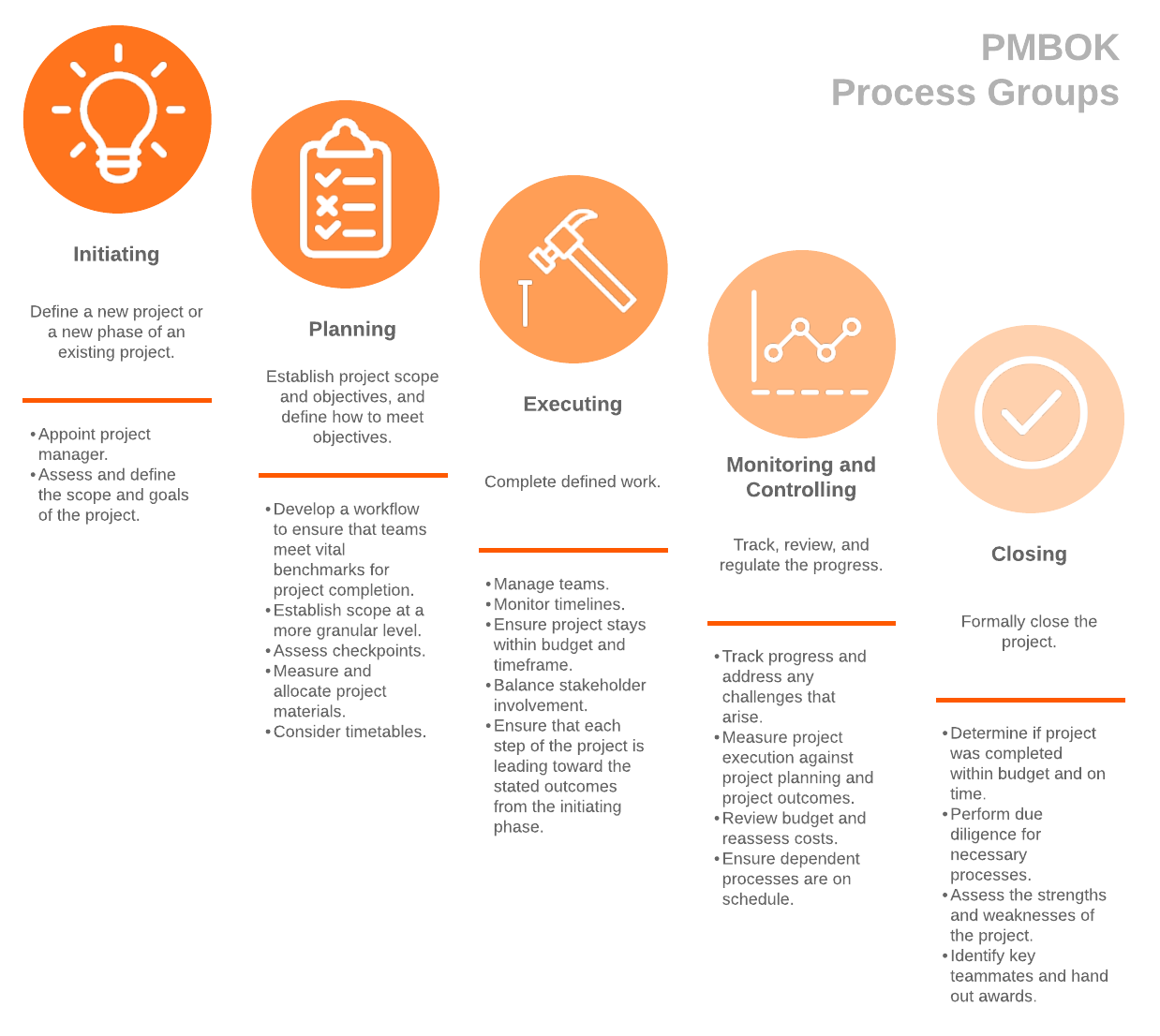What is PMBOK ?
The Project Management Body of Knowledge (PMBOK) is a guide created in 1969 by the Project Management Institute covering all the things to know about project management.
Its aim is to define the knowledge useful for project management and the good practices to adopt. It gathers a framework of standards, conventions, processes, best practices, terminologies, and guidelines that are accepted as project management industry standards.
What are the different steps to follow ?
The PMBOK is more reference of a « five steps to follow » than a methodology in project management :
- Initiating : Project charter and project initiation
- Planning : Scope & budget, work breakdown pattern, Gantt chart, communication plan, resources, risk management
- Executing : Status & tracking, quality, forecasts
- Controlling : Objectives, quality deliverables, effort & cost tracking, performance, check the KPIs (Key Performance Indicators)
- Closing : Project punch-list, reporting

The goal of these steps is to allocate time to the project and stay on track. It allows you to focus on what you have to do and when you have to do it with your team in order to succeed with your project.
Advantages and drawbacks :
The main advantage of the PMBOK is that it is a knowledge and best practice guide created by project management professionals who update it regularly.
This guide allows companies to standardize their practices, which means that each department works the same way. It also allows to find the same practices from one company to another.
In terms of drawbacks, there are no significant ones, except that the PMBOK must be adapted to the size and sector of the project for which you are responsible, thus it can sometimes be a long process because you have to well identify everything before starting the project.

Written by Bande Organisée